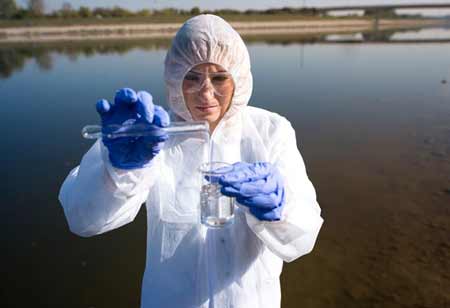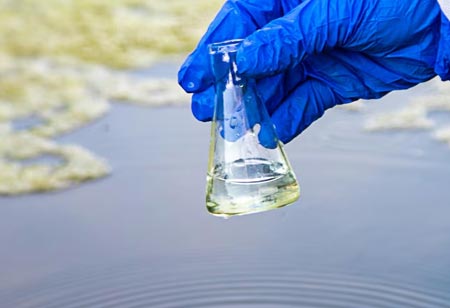Thank you for Subscribing to Environmental Business Review Weekly Brief
Aquatic Restoration Firms Driving Ecosystem Recovery and Resilience
Aquatic restoration firms utilize science and collaboration to enhance ecosystems sustainably.

By
Environmental Business Review | Friday, October 31, 2025
Stay ahead of the industry with exclusive feature stories on the top companies, expert insights and the latest news delivered straight to your inbox. Subscribe today.
Aquatic restoration firms have emerged as key players in addressing the degradation of vital water ecosystems. These organizations focus on repairing damaged habitats, improving water quality, and reinforcing natural resilience against environmental pressures. By combining ecological science with engineering, they restore balance in rivers, wetlands, coastal zones, and other aquatic environments that sustain both biodiversity and human activity. The sector contributes to environmental protection and also supports economic growth, public health, and community well-being. As sustainability and climate resilience gain more attention, aquatic restoration firms are positioned at the intersection of ecological responsibility and societal benefit.
Market Evolution and Emerging Practices
Aquatic restoration firms play a pivotal role in preserving, rehabilitating, and enhancing water ecosystems that sustain biodiversity, support communities, and contribute to environmental resilience. The industry has moved beyond basic conservation efforts, embracing comprehensive restoration programs that address degraded rivers, wetlands, estuaries, and coastal zones. Increasing awareness of the ecological, economic, and social value of healthy aquatic environments has elevated demand for scientifically driven solutions. Restoration efforts are now linked to habitat recovery, flood resilience, water quality improvement, and carbon sequestration goals.
A significant trend within the industry is the integration of ecological science with engineering practices. Firms deploy interdisciplinary teams that combine hydrology, biology, and environmental engineering to create sustainable designs. The market is also shaped by the adoption of nature-based solutions, where wetlands, vegetated shorelines, and natural buffers replace complex infrastructure to provide long-term stability and resilience. Digital technologies further enhance industry practices by enabling remote sensing, drone mapping, and predictive modeling, offering insights that guide design choices and monitoring. These evolving practices demonstrate the shift from reactive mitigation projects toward proactive ecosystem resilience planning.
Industry Barriers and Applied Remedies
Fragmented regulatory frameworks present a notable barrier for aquatic restoration firms, particularly when projects span multiple jurisdictions with overlapping or conflicting requirements. To address this, firms adopt compliance intelligence systems that align design and monitoring activities with relevant standards and regulations. Developing standardized protocols for permitting and reporting enables smoother project approval while ensuring consistency in environmental outcomes. Collaborative dialogues with agencies also serve as an effective mechanism for reducing uncertainty in project timelines.
Financing large-scale aquatic restoration projects remains another significant challenge, as restoration benefits often accrue over the long term, while funding cycles are typically short. To resolve this, firms engage in multi-stakeholder funding models that pool resources from public, private, and nonprofit sectors. Performance-based contracts tied to measurable ecological indicators further secure investment confidence by demonstrating tangible returns, such as improved water quality or increased fish populations.
Technical complexity in restoring aquatic habitats adds another layer of difficulty. Reconstructing natural flow regimes, stabilizing eroded banks, or reintroducing native vegetation requires specialized expertise and adaptive strategies. Firms counter these challenges by leveraging advanced modeling tools that simulate hydrological and ecological dynamics. Pilot-scale interventions are often implemented first, allowing for the collection of real-world data before scaling up solutions. This iterative approach ensures higher success rates and reduces the likelihood of costly rework.
Community alignment is also a frequent concern, as local populations may resist restoration efforts if they perceive potential disruptions to livelihoods or recreational use. The solution lies in inclusive stakeholder engagement, where residents, landowners, and interest groups participate in planning and monitoring. Demonstrating the co-benefits of restoration, such as enhanced recreational spaces, flood protection, and economic uplift from eco-tourism, fosters community support and shared ownership of restored resources.
Growth Pathways and Stakeholder Value Creation
Aquatic restoration firms are increasingly adopting innovative tools and practices that expand the scope and impact of their projects. Artificial intelligence and geospatial analytics now enable predictive assessments of habitat recovery, allowing firms to prioritize areas with the highest ecological value. Machine learning models can forecast the resilience of restored wetlands to climate variability, guiding investment in long-term sustainability. For stakeholders, these innovations provide confidence that resources are being directed to projects with measurable and lasting outcomes.
Nature-based carbon sequestration markets create new opportunities for aquatic restoration firms. Wetlands and mangroves, when restored, act as powerful carbon sinks, allowing projects to generate credits that can be traded in emerging carbon markets. This integration of ecological restoration with climate finance diversifies revenue streams while amplifying environmental benefits. Stakeholders benefit from ecological resilience and financial incentives that make large-scale restoration more feasible.
Advances in biomonitoring technologies also expand the capabilities of firms. Environmental DNA sampling enables rapid and non-invasive assessment of aquatic biodiversity, providing a more accurate picture of restoration effectiveness. Combined with continuous water-quality monitoring sensors, firms can supply regulators and communities with transparent, real-time evidence of ecosystem health improvements. This transparency builds stakeholder trust and facilitates compliance reporting.
Partnership-driven restoration models represent another advancement in the sector. Firms increasingly collaborate with academic institutions, conservation organizations, and community groups to co-design projects. These partnerships ensure that restoration approaches integrate the latest scientific research while reflecting local knowledge and values. The result is more resilient outcomes that serve ecological, social, and economic needs simultaneously.
Sustainability goals further enhance opportunities for aquatic restoration firms. By incorporating circular practices, such as the reuse of dredged sediment, ecological landscaping, and the use of sustainable materials, restoration projects minimize their environmental footprint while maximizing benefits. Stakeholders gain from lower costs, improved resilience, and stronger alignment with global sustainability agendas.





